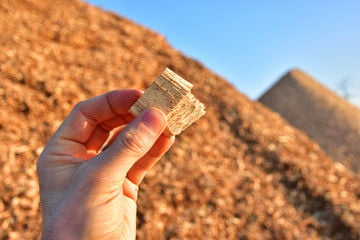Missoula should embrace biofuels as solution to climate change, forest fires
terça-feira, agosto 27, 2019

Raised in a small town in Montana, I have hiked deep into wildernesses with a crosscut, floated the rivers and have seen spectacular views. With a father who has led pack strings through the Bob Marshall Wilderness and a mother who grew up in the heart of the Lolo National Forest, I was immersed in nature and the challenges that are presented before nature. With my ever-growing passion, I became interested in how to best maintain the outdoors through its mostly human-caused trouble. That interest led me down a path of learning various obstacles that nature faced around the world, including the threat of a changing climate.
Today’s increase in greenhouse gases mimics the emissions from ancient volcanoes that ultimately lead to a drastic change in the earth’s climate. I was surprised to hear that the Missoula community had mitigated a solution that the University of Montana had for diminishing climate change and for one of Montana’s greatest problems: biofuels.
Biofuels are renewable sources of energy that are derived from plants. They are usually considered unsustainable because of the space and energy that is taken up for growing plants for biofuels. However, western Montana has trees galore. With sustainable practices, places like the University of Montana can reduce CO2 emissions and better forest management.
Growing up in Montana gave me the ability to work and play in the magnificent forests that make the state so amazing, but I also witnessed the strife of wildfires. While "hiking deep into the wilderness with a crosscut" when I was trail-clearing in the Bitterroot-Selway Wilderness, I saw the effects of wildfires and the effects of climate change. A remorseful site of charred poles cover the landscape in some areas, while hundreds of trees lie around trails waiting for their turn.
A drying climate and more dying trees, due to overcrowding, invasive species and disease, seem to have been causing worse fire seasons. Montana had the largest wildfire, since 1910, in 2017 and the top five years with the most acreage burned since the 1960s have all been after 2006, according to the Congressional Research Service.
Understandably, people would like to see nature stay unreformed by humans. Sadly, we are past this point because of a history of unsustainable practices. Humans are aiding forest fires by changing the climate, humans have helped spread invasive species and humans have started 85% of wildland fires in the United States. The least we can do is reduce the amount of burning to a more natural level.
We can reduce wildfires by selectively logging timber in unhealthy areas and utilizing debris. Then that lumber, though it may not be useful as a product, can be used as energy. The University of Montana can burn chipped logs as a renewable heat and energy source for the campus. This will reduce the amount of carbon emissions from fossil fuels, which are a major source of greenhouse gas emissions. In fact, fossil fuels can emit more than four times more carbon dioxide than woodchip electricity (Forest Research).
In most cases, biofuels are not efficient because the energy and land necessary could not be sustainably offset by the carbon dioxide taken in by the plants. However, the situation in western Montana is unique. Overcrowded stands of trees can be made more healthy in trade for an energy source. Therefore, the communities across western Montana have the opportunity to create jobs, create better forests and work towards a more carbon efficient earth.
The romanticized days of woodsman and the ideas for a cleaner earth can blend. An outstanding opportunity to help our communities lies within our grasp.
Page: Missoulian


















0 comentários
Agradecemos seu comentário! Volte sempre :)